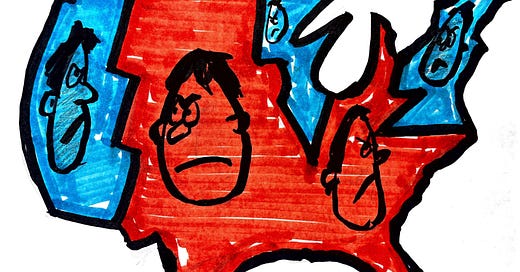Want some good news? With 27 days until Election Day, polling averages suggest Democrats could retain control of the Senate and even gain a few seats there, and are within sight of keeping the House.
Last week, the Cook Political Report, a nonpartisan election forecaster, shifted its forecast in 10 House races, seven of them in favor of Democrats. A day later, analysts at Sabato’s Crystal Ball, an election handicapper based at the University of Virginia, shifted six House seats, four favoring Democrats.
"Democratic optimism grows in battle for House," read The Hill’s Mike Lillis' headline Tuesday morning. Lillis goes on to say: “With a month remaining before the midterm elections, House Democrats are in a position where few expected them to be even just a few months ago: competitive.”
Meanwhile, the forecasters at FiveThirtyEight, tallying up the available evidence, put the chances that Democrats hold the Senate at seventy-one per cent.
But wait. There’s reason to doubt these optimistic numbers.
The debacle of 2016 election polls showing Hillary Clinton with a healthy lead, and the 2020 election polls overstating Biden’s lead over Trump, reveal a dirty little secret: Election polls overstate Democratic strength and understate Republican.
There are three reasons for this bias:
1. Republicans are less likely to respond to election polls. The pandemic understated Republican strength in 2020 because safety-conscious liberals were more likely to be home during lockdowns (and answer telephone calls) while conservatives went out and lived their lives. With lockdowns over, this bias may be over too.
But Trump Republicans are less likely to participate in election polls in the first place. Nate Cohn, The Times’s chief political analyst, found that in 2020, white Democrats were 20 percent likelier to respond to Times/Siena polls than white Republicans. Trump voters tend to be less educated, more anti-establishment, and therefore less likely to respond to polls. (In the poll Cohn is undertaking right now, only 0.4 percent of dials have yielded a completed interview.)
2. Election polls over-estimate the number of people who will be voting, and non-voters are much more likely to be or lean Democrat than are regular voters. People who rarely or never vote don’t like to admit this to pollsters (they don’t want to be thought of, and don’t want to think of themselves, as non-voters). But because non-voters are far more likely to lean Democrat and tell pollsters they favor a Democratic candidate, poll results exaggerate Democratic strength at the ballot box.
3. People who respond to election pollsters don’t want to admit their preferences for Trump. The vast majority of Trump voters lack a college degree. They believe that pollsters (as educated professionals) will disapprove of their support for Trump, so they don’t admit it. This happened in 2016 and again in 2020.
Trump isn’t on the midterm ballot, of course, but many Republican candidates who support him and his Big Lie are on the ballot (in fact, a majority of Republican candidates are election-deniers), so the effect is likely to be the same: understating Republican strength at the ballot box. (According to the Cato Institute’s own polling, 62 percent of Americans say they have political views they’re afraid to share. Many of them, presumably, support Trump and Trump election-deniers.)
I don’t mean to discourage you. Quite the opposite. With 27 days to go, many races could go either way. My point is you shouldn’t pay attention to the polls, and not become so confident that you stop phone banking, canvassing, contributing, and doing whatever else you can. Turnout is the critical variable. We must do everything humanly possible to get out the vote.





















Share this post